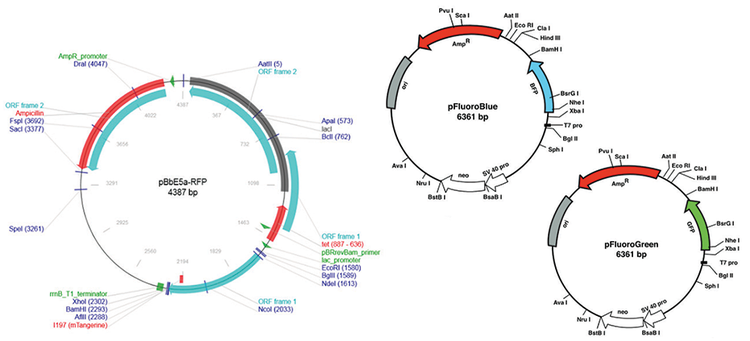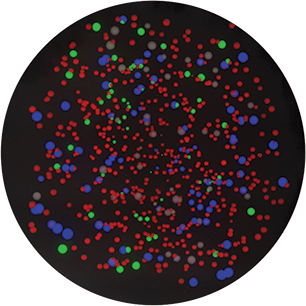
Application Note
Expanded fluorescence screening using QPix 400 series
- Allows researchers to screen bacteria using different fluorescent markers
- Large combination of fluorescent markers allow for adaptive/ creative screening experiments
Introduction
Bacterial screening is a popular method used for detecting recombinant bacteria in vector-based molecular cloning. It can also be used to measure specific protein expression and activity. By being able to screen a variety of fluorescence wavelengths, the QPix™ 400 series of microbial colony pickers increase the possible fluorescent detection combinations in bacterial assays.
Manual picking of microbial colonies is time-consuming and tedious, but with the QPix 400 series, more than 3,000 colonies can be picked in an hour. Additionally, the QPix 400 series imaging module is able to select for colonies based on their fluorescence intensities, thereby ensuring high fluorescence selection and optimizing downstream applications.
In this application note, we demonstrate how to create filter-pairings in order to screen for various fluorescent bacteria using the QPix system.
Materials and methods
The pFluoroGreen and pFluoroBlue plasmids carrying the ampicillin resistance gene from Edvotek were used to transform chemically competent E. coli and grown on LB-amp plates. E. coli expressing RFP and the ampicillin resistance gene were acquired from the Keasling Lab of Lawrence Berkley National Lab (Figure 1). Different combinations of the fluorescence bacteria were plated onto LB-amp plates and incubated at 37°C overnight.

Figure 1. Plasmid maps of for the fluorescent screening. The pBbE5a-RFP was obtained from the Keasling Lab at the Lawrence Berkeley National labs. The pFluoroBlue and pFluoroGreen plasmids were obtained from the EdvoTek Biotechnology Education Company (plasmid maps courtesy of Keasling Lab at Lawrence Berkeley National Lab and EdvoTek, www.edvotek.com).

Figure 2. Identification of fluorescent bacterial colonies on the QPix 420 system. Top panel: Fluorescence images of bacterial colonies expressing pFluorBlue, pFluorGreen, and RFP respectively. Bottom Panel: Initial colony selection performed on white-light images in QPix software and then subsequently selected based on fluorescence intensity. Yellow outlines indicate colonies identified for picking on the basis of fluorescence readout, red outlines are ignored.
Bacterial colonies were imaged in white light and subsequently screened using various filter combinations shown in Table 1 and the “white light and fluorescent imaging feature” on the QPix 420 system. Users have options to select clones based on their size, morphology, and fluorescence intensity, thereby allowing researchers to enhance their ability to select desirable clones.
Fluorescent images of the bacteria were pseudo-colored and overlayed using MetaMorph® Microscopy Automation & Image Analysis Software (Molecular Devices) to create Figure 3.
Table 1. Different filter combinations used to screen bacteria.
Conclusion
There is an increasing need for the ability to screen for multiple fluorescent bacteria in a single culture. By utilizing the QPix 420 system’s different filters, one can fulfill this need through the use of intricate fluorescent screening assays. Additionally, the software allows users to select for the highest-expressing (most fluorescent) bacteria for future downstream experiments.

Figure 3. Pseudocolored image of fluorescent, transformed E. Coli and imaged using the QPix 420 system created using MetaMorph® software available from Molecular Devices.

Figure 4. Instructions on how to set up the fluorescent filter.
Reference
- Lee T, Krupa R, Zhang F, Hajimorad M, Holtz W, Prasad N, Lee SK, Keasling J. BglBrick vectors and datasheets: A synthetic biology platform for gene expression. Journal of Biological Engineering 2011, 5:12.10.1186/1754-1611-5-12.